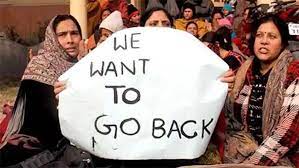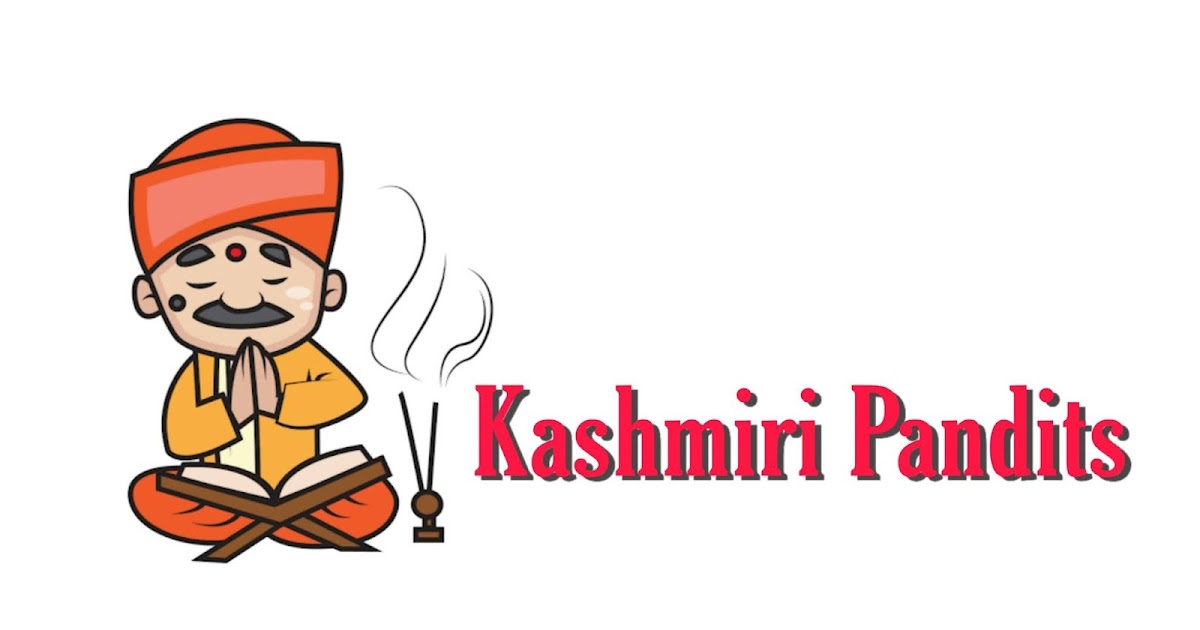Without going into the politics of what led to the exodus of Kashmiri Pandits, It is more important to analyze rationally why the presence of a Koshur Hindu Pandits is a must for the existence of Koshur identity.
By Javed Beigh
This year marks over three decades of the exodus of Kashmiri Pandits community from Kashmir valley. The departure of the Kashmiri Pandit community was the beginning of the end of the “romance of Kashmir”. If one was to look back and analyze what the people of Kashmir achieved in their political quest in all these three decades, one would find a bruised, gutted and ruined Kashmir, which today has even less than what it had three decades ago, forget about gaining anything new. The loss of Kashmiri Pandit community remains perhaps the greatest loss faced collectively by the entire Koshur community.
Without going into the politics of what led to the exodus Kashmiri Pandit community, beginning in 1990, what is more important is to analyze rationally why the presence of a non-Muslim community of ethnic Koshur Hindu Pandits is a must for the existence of Koshur identity. The absence of Koshur speaking Kashmiri Pandits cannot be fulfilled by any other ethnic, linguistic or religious minority in Kashmir valley. The absence of Kashmiri Pandits can neither be filled by Kashmiri Sikhs, Muslim Gujjar & Bakarwal community, Pahari Muslims or Ladakhi /Kargil Muslims as none of these are ethnically Koshur. Being “Koshur” is a distinct ethnocultural and linguistic identity for both Kashmiri Muslims and Kashmiri Pandits, making them different from other Muslim and Hindu communities of South Asia.
Kashmiri Pandits were called Koshur Battas in Kashmir, rather than a Hindu community. It is a pointer that Kashmiri Pandits were considered part of the Koshur fabric regardless of their non-Muslim faith. Being a “Koshur” meant being Koshur Musalman and Koshur Batta rather than a Kashmiri Muslim and Kashmiri Hindu. The exodus of Kashmiri Pandit community was a massive cultural blow that literally destroyed the very foundations upon which Koshur identity had evolved all these centuries.

Sadly, the present generation of Kashmiri Muslims and Kashmiri Pandits who were born in the 1990s, one in the tumult of violence and instability and another in the cultural detachment, understands very little of this symbiotic Koshur Muslim – Koshur Pandit cultural identity that defined a Koshur person. The world view of the younger generation of Kashmiri Muslims and Kashmiri Pandits is determined by a biased historical narrative based on hatred and bitterness, and there seems to be hardly any efforts or interest to bring the younger generation of Koshur Pandits and Koshur Muslims together to once again restore the cultural identity of being a “Koshur”.
Kashmiri Pandit community living in exile is staring at cultural extermination. The younger generation of Kashmiri Pandits born in different parts of India and abroad are so detached from the ethnic Koshur cultural roots that the ethnic identity of being a Koshur is now only being superficially preserved through the making of Kashmiri cuisine at home and celebration of Pandit festivals in an alien land when such festivals are connected with the season, geography and topography of Kashmir valley. It is also unfair to expect Kashmiri Pandits born outside Kashmir valley to understand and appreciate the cultural and linguistic nuances of being Koshur while living in Bangalore or New York.
Things are not even rosy for the younger generation of Kashmiri Muslims either. In addition to the trauma of violence, instability, death and destruction, a Kashmiri Muslim youth born in the 1990s has hardly seen any sustained cultural activity in Kashmir valley in literature, music, dance, and performing arts theatre, films etc. The rise of religious radicalism has meant the decline of Kashmiri Sufism, with which a cultural identity of a Kashmiri Muslim was deeply attached. The growing “Hindization” of Kashmiri Pandits and growing “Arabization” of Kashmiri Muslims is gradually eating away the very soul of the much-maligned notion of “Kashmiriyat” that gave a Kashmiri Muslim and Kashmiri Pandit a distinct cultural identity.
We don’t realize it, but Koshur community is rapidly going through such catastrophic cultural transformation that the very identity of being a Koshur is now at stake. The younger generation of Koshur Pandits and Koshur Muslims have to come together to recraft and restore this Koshur identity together and collectively.
We don’t realize it, but Koshur community is rapidly going through such catastrophic cultural transformation that the very identity of being a Koshur is now at stake. The younger generation of Koshur Pandits and Koshur Muslims have to come together to recraft and restore this Koshur identity together and collectively.
The important question is that, is the Kashmiri community even interested in doing so?
The political bitterness and perception of betrayal run deep in the hearts of the older generation of Kashmiri Muslims and Kashmiri Pandits. There is hardly any common, neutral and secular space for the younger generation of Kashmiri Pandit and Muslim communities to interact with each other. The bitterness and bias of the older generation are taking their revenge on the collective cultural identity of being a Koshur, and the younger generation of Pandit and Muslim communities are its greatest victims.
It is understandable that the younger generation of Kashmiri Pandits are now employed outside Kashmir valley and have now built-up financial stakes in different parts of India and abroad, and it is tough for them to return meaningfully back to Kashmir valley, which remains besieged by violence, instability, declining economy and poorly functioning internet services.
But that doesn’t mean that Kashmir has lost all sentimental and material value, even for well-established Kashmiri Hindu Pandit diaspora. Despite all the trauma, Kashmir valley still remains breathtakingly beautiful and endowed with abundant natural resources that rival and even exceed many similar alpine European and North American countries and regions. With its unique strategic location between Central and South Asia and its European alpine climate, Kashmir has the tremendous economic potential to rival even Davos in Switzerland. The younger generation of Kashmiri Pandits, with their excellent and varied expertise in different fields worldwide, can contribute a lot to the modern economic revival of Kashmir valley and thereby rebuild the age-old, much-loved notion of Kashmiriyat, which was once an envy of the world. This is perhaps the time to reach out to the younger generation of Kashmiri Pandits with a new vision and rigour and bring them back to Kashmir to rebuild the lost essence of being a Koshur.
(The author can be reached @Javedbeigh across Social Media Platforms. Views are his personal.)

Leave a Reply